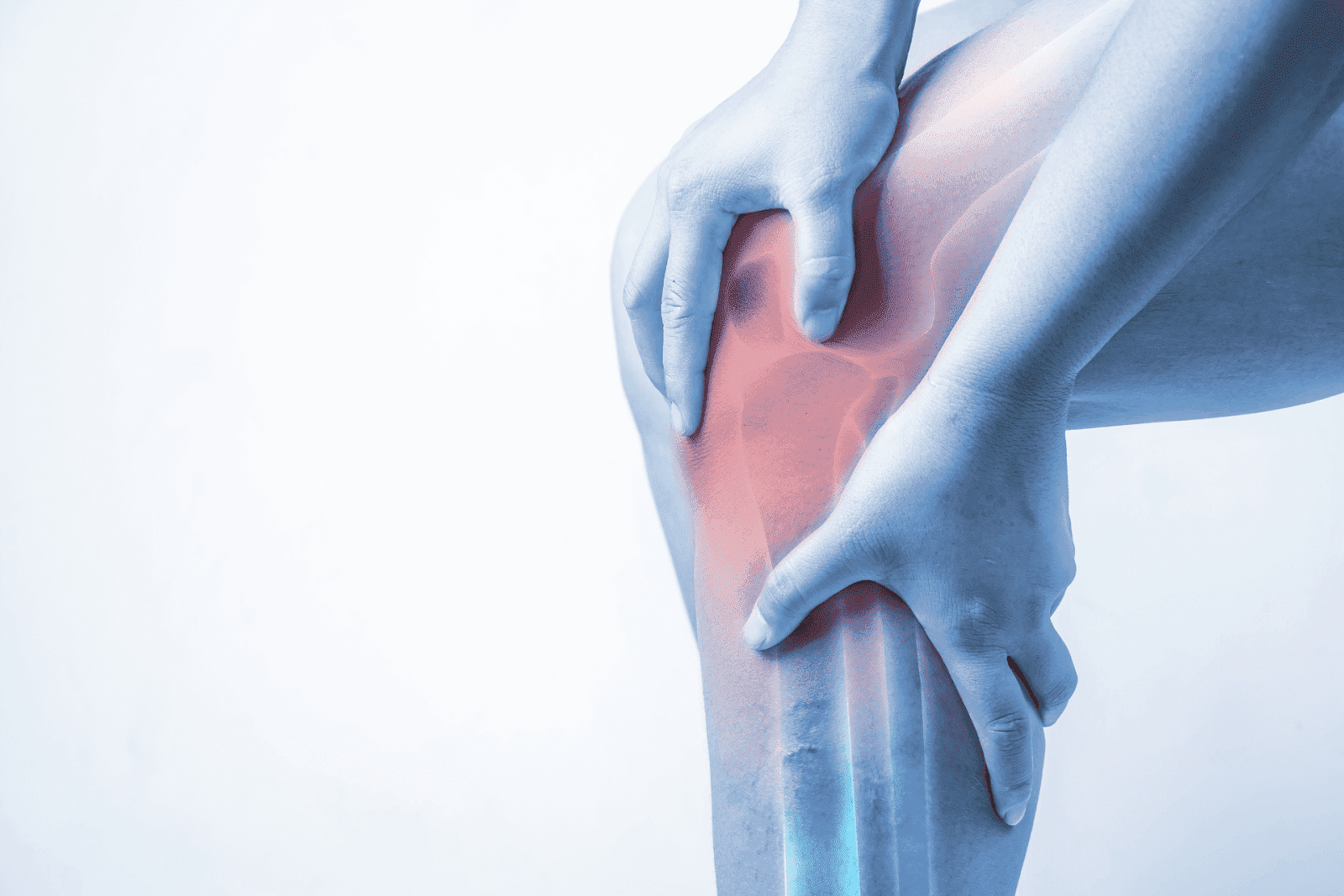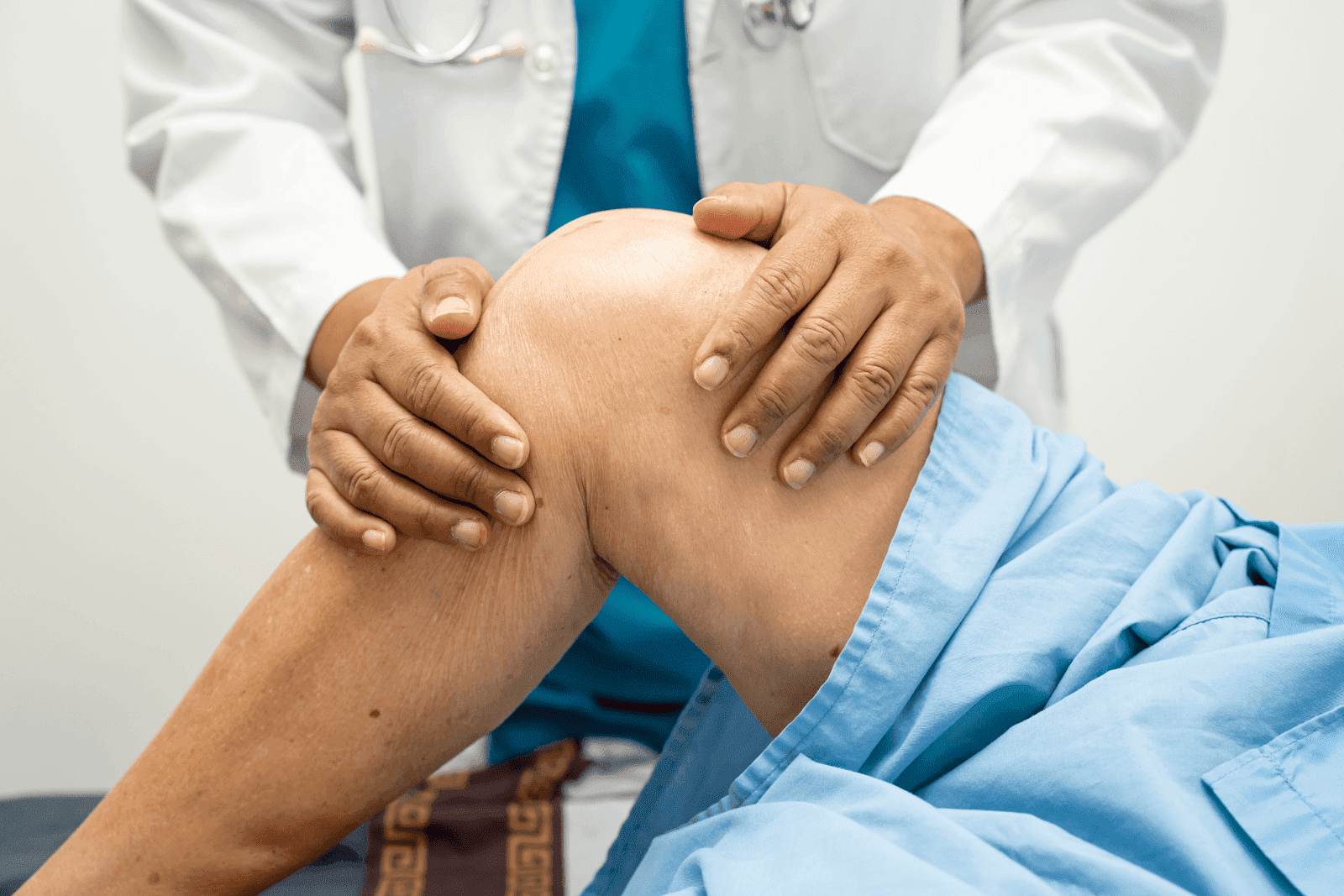How to Get Rid of That Crunching Sound in Your Knee
Many people experience a crunching or popping sound in their knees at some point in their lives. While it can be alarming, this noise is often harmless. However, if [...]
Read More
Medically reviewed by Abhijit Bhattacharyya | MD, PhD, MBA, Tufts University School of Medicine - Miami, Florida on October 13th, 2025.
Many people experience a crunching or popping sound in their knees at some point in their lives. While it can be alarming, this noise is often harmless. However, if accompanied by pain or swelling, it may indicate an underlying issue that requires medical attention. Understanding why your knee makes this noise and how to address it can help you maintain healthy joints and prevent further discomfort.
The crunching or popping sound in the knee is medically known as crepitus. It can arise from several factors, some benign and others that may need treatment.
 Natural Joint Movement and Gas Bubbles
Natural Joint Movement and Gas BubblesOne of the most common reasons for knee crunching is the release of gas bubbles within the synovial fluid, which lubricates the joint. When the joint moves, these bubbles can burst, creating a popping or crunching noise. This is usually harmless and not associated with pain. Interestingly, this phenomenon is not limited to the knees; similar sounds can occur in other joints, such as the knuckles or shoulders, due to the same gas bubble dynamics. Many people report that these sounds become more noticeable after periods of inactivity, as the gas can accumulate when the joint is at rest.
As we age or due to repetitive stress, the cartilage cushioning the knee joint can wear down. This can cause rough surfaces to rub together, producing a crunching sound. This is often seen in conditions like osteoarthritis and may be accompanied by stiffness or discomfort. The deterioration of cartilage can lead to inflammation in the joint, which may exacerbate the crunching sound and result in a decreased range of motion. Additionally, factors such as obesity and a lack of physical activity can accelerate cartilage wear, making it crucial to maintain a healthy lifestyle to support joint health.
Damage to the knee’s ligaments, menisci, or tendons can also cause noises during movement. For example, a torn meniscus might produce a clicking or crunching sound, often with pain or instability. These structural issues can arise from acute injuries, such as sports-related trauma, or from chronic overuse. In some cases, the presence of loose fragments of cartilage or bone within the joint can lead to additional noises, as these fragments may interfere with smooth joint movement. Proper diagnosis and treatment are essential, as untreated injuries can lead to long-term complications and further joint degeneration.
Not all knee sounds require medical attention. However, certain symptoms alongside the crunching sound may indicate a problem that needs evaluation.
If the crunching is accompanied by persistent pain, swelling, or warmth around the knee, it could signal inflammation, injury, or arthritis. Ignoring these symptoms can lead to worsening joint damage. In some cases, the presence of fluid buildup, known as effusion, can also occur, which may necessitate drainage or further investigation. Early intervention can help manage the condition more effectively and prevent long-term complications, such as chronic pain or reduced range of motion.
Difficulty bending or straightening the knee, or feelings of the knee giving out, warrant a professional assessment. These signs might point to ligament damage or cartilage issues. Additionally, if you experience a locking sensation, where the knee feels stuck in a certain position, it could indicate a meniscus tear. This type of injury can be particularly debilitating, as it not only affects mobility but also the overall stability of the knee joint. Physical therapy may be recommended to strengthen the surrounding muscles and improve joint function.
If you hear a crunching sound following a fall, twist, or direct blow to the knee, it’s important to seek medical care promptly to rule out fractures or ligament tears. In such instances, imaging tests like X-rays or MRIs may be necessary to assess the extent of the injury. Prompt diagnosis is crucial, as untreated injuries can lead to chronic instability or degenerative changes in the knee joint over time. Rehabilitation exercises and possibly surgical intervention might be required to restore full function and prevent future issues.
Depending on the cause, there are several strategies to reduce or eliminate the crunching sound in your knee.
Excess body weight increases stress on the knee joints, accelerating cartilage wear. Maintaining a healthy weight through balanced nutrition and regular exercise can reduce joint strain and improve overall knee health. Incorporating whole foods, such as fruits, vegetables, lean proteins, and whole grains into your diet can provide essential nutrients that support joint function. Additionally, staying hydrated is crucial, as water helps lubricate joints and maintain their health. Regular check-ins with a healthcare provider can also help tailor a weight management plan that suits your individual needs.
Strong muscles support and stabilize the knee joint. Exercises targeting the quadriceps, hamstrings, and calf muscles can reduce joint stress and improve alignment, potentially decreasing crunching sounds. Resistance training, such as using weights or resistance bands, can enhance muscle strength effectively. Moreover, incorporating stability exercises, like single-leg stands or balance boards, can further engage the muscles around the knee, improving proprioception and reducing the risk of injury. It's essential to gradually increase the intensity of these exercises to avoid overloading the joints.
Engaging in low-impact activities like swimming, cycling, or walking helps maintain joint mobility without excessive strain. Regular stretching can also improve flexibility and reduce stiffness that contributes to joint noise. Activities such as yoga or Pilates can be particularly beneficial, as they promote not only flexibility but also core strength, which is vital for proper body mechanics. Incorporating a routine that includes both dynamic stretches before workouts and static stretches afterward can enhance overall joint function and reduce the likelihood of crunching sounds.
Wearing shoes with good arch support and cushioning can improve knee alignment and reduce impact forces, helping to minimize crunching sounds during movement. It's important to choose footwear that fits well and is appropriate for your specific activities, as different sports may require different types of support. Regularly replacing worn-out shoes can also prevent misalignment and discomfort that might contribute to knee issues. Additionally, considering orthotic inserts can provide extra support and help distribute weight evenly across the foot, further alleviating stress on the knees.
For occasional swelling or discomfort, applying ice can reduce inflammation, while heat can relax muscles and improve circulation. These methods can provide temporary relief and reduce symptoms associated with knee noise. It's beneficial to alternate between ice and heat, depending on the activity level and symptoms experienced. For instance, after a vigorous workout, ice can help mitigate any post-exercise swelling, while heat can be used before activity to loosen tight muscles. Additionally, incorporating gentle massage techniques around the knee can enhance blood flow and promote relaxation, further aiding in the management of knee crunching.
If knee crunching is persistent, painful, or accompanied by other concerning symptoms, it is important to seek medical advice. Early diagnosis and treatment can prevent further damage and improve outcomes.
Accessing medical care has become easier with telehealth platforms. Doctronic.ai offers free AI doctor visits that provide quick, evidence-based assessments for your knee concerns. Their AI synthesizes the latest peer-reviewed medical research to give you comprehensive answers in seconds.
In addition, Doctronic provides affordable telehealth video visits with licensed doctors available 24/7 across all 50 states. This means you can get personalized medical advice and treatment recommendations from the comfort of your home, without waiting weeks for an appointment.
A healthcare provider will typically review your symptoms, medical history, and perform a physical examination. Imaging studies like X-rays or MRI may be ordered to assess cartilage health and detect injuries.
Treatment depends on the underlying cause and may include physical therapy, medications, injections, or, in some cases, surgery. Early intervention often leads to better recovery and less joint damage.
 Preventing Future Knee Problems
Preventing Future Knee ProblemsTaking proactive steps can help you avoid knee issues and the associated crunching sounds.
Consistent, moderate exercise strengthens the muscles supporting your knees and maintains joint flexibility. Avoiding high-impact activities that strain the knees can also help preserve cartilage.
Using reliable medical platforms like Doctronic.ai ensures you receive accurate, up-to-date information about your joint health. Their AI doctor remembers your history and provides personalized advice, making it easier to manage your knee health effectively.
Pay attention to any new or worsening symptoms. Early recognition and management of knee problems can prevent chronic issues and maintain your mobility and quality of life.
The crunching sound in your knee is often a normal part of joint movement, but it can sometimes signal underlying problems. By understanding the causes, adopting healthy lifestyle habits, and seeking timely medical advice, especially through convenient telehealth services like Doctronic.ai, you can effectively manage and reduce knee crunching. Prioritizing your knee health today will help you stay active and pain-free for years to come.
Don't let knee crunching slow you down. With Doctronic, you're just seconds away from quality care that's faster, smarter, and more personal. Our AI Doctor is ready to provide you with the most modern medical advice tailored specifically to your needs. Remember, it's not just about managing symptoms; it's about optimizing your health. So why wait? Skip the line. Talk to an AI Doctor Now, for free.
Many people experience a crunching or popping sound in their knees at some point in their lives. While it can be alarming, this noise is often harmless. However, if [...]
Read More